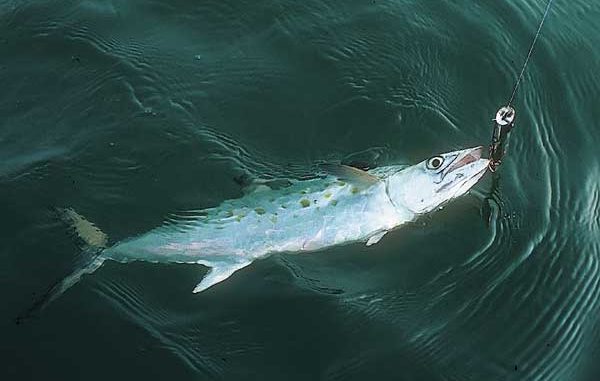
Saltwater fishing is seldom better than in July, with water temperatures warm enough to please all fish. Cool fronts that you have to plan around come with much less regularity as summer settles in.
South Carolina’s bounty of coastal resources is available to saltwater fishermen seeking adventure, and the right time to go fishing in July is truly whenever you have the opportunity.
A species that seems to be surging in both numbers and size during July is the Spanish mackerel, or Scomberomorus maculatus, a fish that offers a sporting challenge and fine table fare.
Locating Spanish mackerel, which almost always show up in schools, is the first part of the challenge. Whether fishing along the beach, a pier or a boat, you must scout a bit to learn their favorite haunts.
Spanish mackerel are often easy to spot; they have a tendency to jump completely out of the water, revealing their position the same way a turkey gobbler does when he sounds off in the spring. Spanish will jump in a high, arcing display that screams for the fisherman to accept his challenge.
The challenge cannot be accepted unless you figure out what they are biting. Spanish are notorious for being finicky and will not stray too far from the natural bait on which they are feasting. These natural baits range from glass minnows to finger mullet and menhaden. Try offering a bit of menhaden to a school of Spanish that has herded a thousand glass minnows into a ball, and you will learn the meaning of frustration.
Rather than seek frustration, why not study what the glass minnows look like and how they move. They are surprisingly small, silvery creatures, so tie on your smallest shiny lure and hope it is a close enough match to entice a strike.
A Spanish strikes with a ferocity that comes from its slashing method of feeding, where its rows of sharp teeth are combined with the speed of a fork-tailed mackerel. Hang on as the Spanish makes his initial run, then gently tighten your drag and reel him in.
The daily limit in South Carolina is 15 fish per day, and there is a 12-inch minimum length. These somewhat oily fish are thin-framed, very easy to clean and can be cooked on the grill. I have spent many fine July afternoons looking out at the water, coming to grips with fresh, sun-kissed redness, while grilling a few Spanish mackerel with some fishing mates.
Tackle for Spanish mackerel must include a wire leader of roughly 12 inches because a Spanish will literally shred monofilament line if you tie directly to your lure. The most common lure is a No. 00 Clark spoon, which is very light and best used when trolling from a boat. Casting from the beach or a jetty will require a weighted lure such as a Hopkins spoon. Fishing from a pier might call for something with a weight in between the previous two, such as a Got-Cha lure.
Another tip is to use black or darkly-colored swivels to attach your leader to the monofilament line on your reel, because if the Spanish are thick — and you might see a school as long as a football field — they hit almost anything. They will actually strike at the swivel if it is silver and flashy, with the end result always being the loss of your favorite spoon, no fish and another dose of frustration.
Try a 6-6 rod and a reel spooled with 12- pound test, and you will feel a considerable pull when hooked up.
While cruising, try likely spots like where two tidelines converge, creating a rip current. The current can knock baitfish silly for a moment, giving the Spanish time to spring their attack. You never know how long they will feed, so it’s wise to keep a rod rigged and ready to cast to any fish sighted. Their feeding activity can heat up fast, similar to a bag of microwave popcorn, but it can also wind down just as fast.
No, make that faster.
You can go from pulling Spanish in at a frantic pace to staring at calm waters in the blink of an eye. When you’re catching them, a lot of head-shaking and jumping provides for plenty of thrown hooks, but that same natural fighting ability makes a fishermen happy in his quest.
Spanish have shredded more than a few landing nets, so a pair of fishing pliers is a good idea for removing hooks. A rag proves useful as well, since they will bleed quite a bit while the hook is being removed.
When Spanish are almost jumping in the boat, it’s easy to get carried away, but conservation-minded sportsmen know when to say when. Don’t forget that you can increase the challenge by putting up the spinning tackle and pulling out the fly rod.
At times, Spanish mackerel will take live bait fished under a float, or dead bait fished on the bottom. And remember, Spanish mackerel don’t simply break the surface, they jump out of the water with grace. The coloration on their back is a black-bluish green, with silver sides polka-doted with yellow spots. The average size is two to four pounds, with their average length 12 to 20 inches.
Now go practice your Spanish!



Be the first to comment